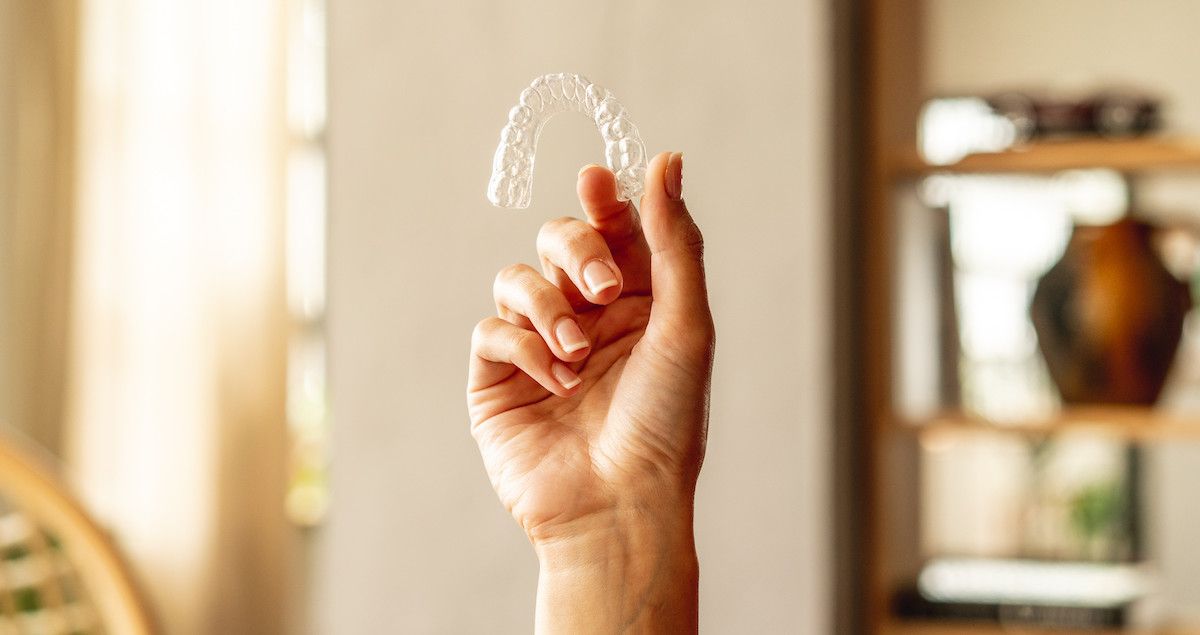The fascinating history of clear aligner treatment
You’d probably be forgiven for thinking that removable clear aligner treatment for teeth started with Invisalign. While it’s true that the Invisalign brand went a long way towards turning the orthodontic industry on its head, the idea behind moving teeth using removable appliances actually stretches back to the 1940’s.
Humble beginnings
In 1945 an American orthodontist by the name of Harold D Kesling invented a removable custom-designed appliance that looked and functioned similarly to a mouth guard. Made of rubber and worn on both teeth quadrants, the ‘tooth positioner’ as it was known, was really the first non-metal, removable device for straightening teeth. Used in conjunction with traditional braces, it sped up the process and is considered the frontrunner of what we know today as clear aligners.
1960’s to the 1980’s
By the mid-1960’s researchers started to document the success of so-called ‘one-piece plastic splints’ which by this time were now being used to make minor teeth corrections. While they were still a million miles from the sleek, sophisticated clear teeth aligners we know today, they were by the mid-1970’s, recognized as a form of orthodontic treatment and became more and more widespread.
By the 1980’s plastic was replaced by silicon. Known as Elastomer Devices, they were a huge breakthrough because, for the first time, tooth movements of up to 3mm could be achieved using a single Elasto appliance.
The 1990’s
This is the decade where it all ‘kicked off’ as far as aligners for teeth are concerned. In 1993, American orthodontist, John Sheridan devised the Essix retainer which is still in use today. It was, in fact, the first true clear aligner system. Now, it was not only possible to make custom adjustments in the lab, but splints could also be tweaked individually in order to induce varying tooth movement by inserting small pins. Bizarrely, the term Essix is an acronym for S -Six or Sheridan’s Simple System for Stabilising the Social Six. A bit of a mouthful don’t you think?
While the Essix retainer continues to experience some success, it can only move teeth a limited distance and as such was/is predominantly used for minor corrections of the front teeth.
The Align domination begins!
In 1997 two Stanford University students, Zia Chishti and Kelsey Worth, invented the world’s first complete clear aligner system. Known as Invisalign, the concept involved a series of removable clear plastic aligners aimed at adults seeking discreet orthodontic treatment. You have to remember that prior to this, if anyone needed straighter teeth, they had to endure bracket and wire style treatments coupled with retainers and positioners. Suddenly, teeth could be moved extensively using discreet removable aligners only.
While the pair had hit upon something truly unique, what was even better was the fact that this type of clear teeth aligner was the first to be replicated using a series of computer-aided models taken from one single impression. Of course, this meant that dentists had to use their computer system if they wanted to treat patients this way.
Not only that, Align Technology (the newly formed company behind the Invisalign brand) managed to get a patent for producing more than three aligners from one impression. So over the next few years, their impregnable IP (Intellectual Property) meant that they were able to monopolize the market right out of the gate. In fact, when they launched in 1999, Align technology was in an enviable position in that they had zero competition and this remained the case for many years to come.
Lawsuits, Litigations, libels and finally, competition!
Despite the extensive IP that Align had, that didn’t stop other companies from trying to enter the market, and during the early 2000’s, there were a number of high profile lawsuits filed against companies who encroached on Align’s patents. One of the most high profile was Orthoclear (the company Chishti started when he severed ties with Align). This was settled in 2006 when Align agreed to buy Orthoclear’s IP for around $20 million and the company ceased trading.
By 2016, Invisalign products were used in around 8% of the 3 million new orthodontic patients in the US and the company had cornered a little over 80% of the clear aligner orthodontics market. Sales had also hit $1 billion for the first time. However, by the end of that year, the company reached a crossroads.
In October of 2017, its tight network of over 400 US and 300 Foreign-issued patents started to expire. This led to a whole group of startups who had been waiting in the wings. Suddenly and for the first time, Invisalign had serious competition from companies who not only did things smarter and better but also cheaper.
Now people seeking discreet ways to obtain straighter teeth have many more choices.

So what’s different?
Unlike Invisalign treatment, which is traditionally recommended and carried out by your dentist/orthodontist, other companies utilize a combination of remote teledentistry and e-commerce to bring cheaper alternatives to Invisalign to the masses.
While some companies operate a fully remote business model where everything is done online (virtual orthodontists and DIY impression taking included), others (including us at Uniform Teeth) believe that face-to-face time with a highly experienced orthodontist is invaluable and, in this case, offers the customer the best of both worlds. After all, getting straighter teeth is a complex medical procedure, so seeing an orthodontist is the best way to ensure that it’s done correctly!
It’s good to know that in 2021, patients have a choice when it comes to obtaining the best clear aligner treatment – so remember to always do your research before making a major medical decision.



